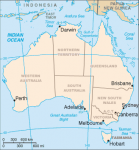
Photo: The Costa Concordia in better days (31 July 2009). CREDIT: Cezary Piwowarski SOURCE: Wikipedia (Public Domain).
From CNN By Dan Rivers, CNN
Giglio, Italy (CNN) — The shock of seeing the forlorn hulk of the Costa Concordia hasn’t been dimmed by time. I’m here once again on the pristine little Italian island of Giglio, made famous not for its beauty, but for the tragedy on its shores.
The Concordia is illuminated by salvage vessels in the inky dark March night. Plans are well advanced to move the vessel, but for now it remains stranded, a macabre beacon at the entrance to the island’s main port. . . . Read Complete Report w/photos, videos and related links







